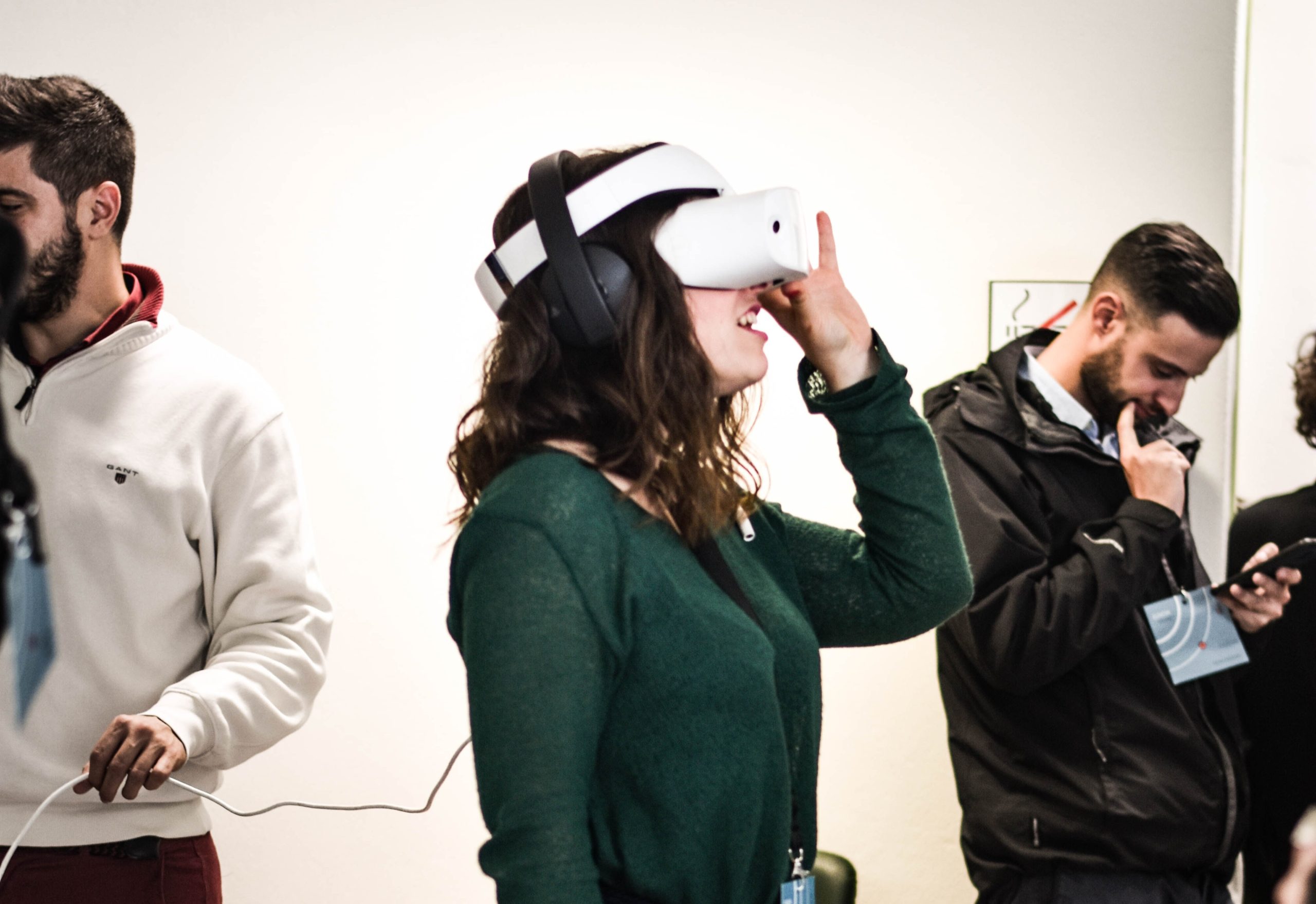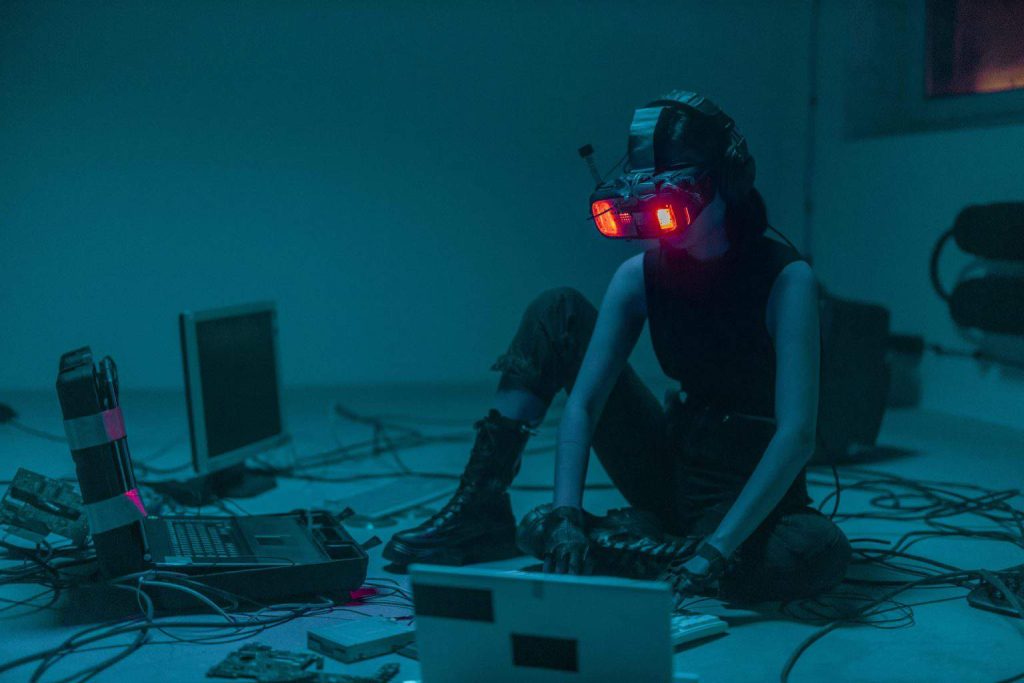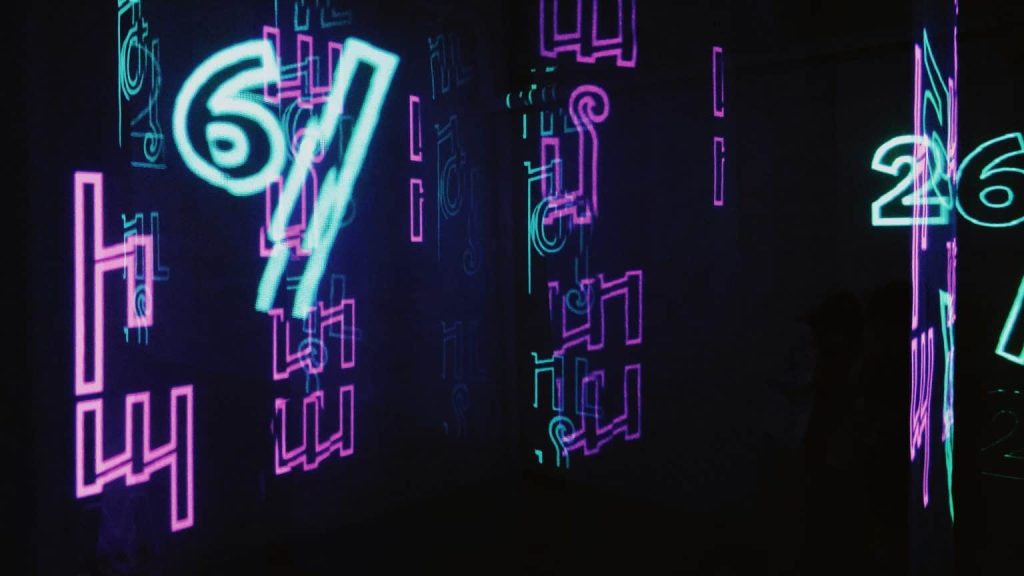
03 Feb Technologies Transforming Digital Art Exhibitions
Pushing the limits of creative expression, digital art has become a dynamic force in today’s fast-changing technological scene. Even though they are ageless, traditional art shows struggle to attract a variety of audiences and offer engaging experiences. This article talks about how technology has revolutionized digital art shows, bringing in a time where accessibility and creativity are not limited by physical locations.
Digital art’s convergence with technology goes beyond mere digitization, encompassing immersive virtual reality installations and interactive digital canvases that redefine how we experience and engage with art. This shift democratizes the art world, enabling digital exhibitions to reach global audiences and fostering inclusivity irrespective of geographical boundaries. As technology intertwines with artistic expression, this article delves into the pivotal role it plays in reshaping the viewer-artist relationship, opening up new possibilities for a more interconnected and culturally diverse future in the world of art.
Emerging Technologies and Their Impact in Digital Art Exhibitions

Photo by cottonbro studio
VR/AR
Virtual reality (VR) and augmented reality (AR) have significantly transformed the traditional art-viewing experience. In the realm of VR, immersive galleries transcend physical constraints, transporting viewers into fantastical realms and altering the very definition of exhibition spaces. AR, on the other hand, takes interactivity to unprecedented levels by overlaying digital information onto the physical world. A prime example of the potential of VR/AR lies in the ‘Museum of the Future,’ where these technologies converge to redefine the boundaries of artistic expression and audience engagement.
Artificial Intelligence (AI)
AI has ceased to be a mere buzzword in the art world; it has become a multifaceted force as a curator, artist, and preserver. AI-driven curation stands out for its ability to provide personalized recommendations, tailoring the art-viewing journey to individual preferences. Moreover, dynamic and generative art pieces, evolving in real-time through AI algorithms, challenge conventional notions of static artworks. Beyond creation, AI plays a crucial role in art restoration and preservation, ensuring that cultural heritage withstands the test of time with advanced techniques and algorithms.
Haptic Technology
Art extends beyond the visual realm, and haptic technology has emerged as a pivotal element in creating a multisensory art experience. By introducing tactile sensations, it enriches the visual and auditory aspects, enabling visitors to physically feel the texture of a painting or the weight of a sculpture. Noteworthy innovations, such as haptic gloves, provide users with the ability to “touch” digital art, breaking down barriers between the physical and virtual worlds and fostering a deeper emotional connection between the audience and the artwork.
Biometric Sensors and Data Visualization
Understanding the emotional response of the audience has become an integral aspect of the art world, and biometric sensors play a key role in this endeavor. By tracking visitor reactions, these sensors shape the exhibition experience, allowing curators to adapt and enhance the display based on real-time emotional feedback. Furthermore, the integration of data visualization techniques transforms raw emotional data into tangible and immersive art installations. However, this intersection of art and data raises ethical considerations, prompting discussions about privacy and consent in this evolving and data-driven artistic landscape.
Accessibility and Democratization of Art

Photo by Artem Bryzgalov
The digital age has brought about a transformative evolution in the accessibility and democratization of art. Virtual exhibitions have emerged as powerful tools, breaking down traditional limitations imposed by physical boundaries. These online showcases enable artists to connect with a global audience, allowing enthusiasts from around the world to explore the diverse and dynamic realm of art without the constraints of geographical barriers.
One key advantage of digital art exhibitions lies in their elimination of geographical restrictions. Unlike traditional galleries, virtual exhibitions make art accessible to anyone with an internet connection, broadening the reach of artists and providing art lovers with the opportunity to explore works they might not encounter otherwise. The integration of blockchain technology and non-fungible tokens (NFTs) has further revolutionized the art landscape by ensuring transparency and security in transactions. NFTs, unique digital assets representing ownership or proof of authenticity, offer artists a groundbreaking method to monetize their work and establish a direct connection with their audience, challenging traditional gatekeepers and intermediaries.
Beyond financial benefits, the digital landscape encourages collaboration and community-building. Online platforms and social media enable artists to connect with each other and their audiences, fostering a sense of belonging and shared appreciation for diverse artistic expressions. This collaborative spirit strengthens the democratization of art, breaking down barriers between creators and consumers. In essence, the accessibility and democratization of art in the digital era redefine the dynamics of creativity, ownership, and appreciation, reshaping the art world as it continues to evolve.
Challenges and Future Considerations

Photo by Drew Dizzy Graham
The convergence of technology and art presents both opportunities and challenges. Financial constraints and technological barriers hinder many artists and institutions from fully embracing the potential of technological advancements. Striking a delicate balance between traditional art preservation methods and rapid technological evolution is a crucial challenge, requiring the integration of emerging technologies without compromising the historical and cultural significance of art.
Ethical considerations add another layer of complexity, with data privacy emerging as a paramount concern. As artists increasingly use digital platforms and tools, the ethical dilemma of leveraging data for creative purposes while safeguarding individual privacy becomes prominent. Inclusivity is also a key ethical consideration, demanding efforts to ensure that technological advancements in art are accessible to diverse audiences. The evolving regulatory landscape surrounding data protection further underscores the need for constant adaptation and vigilance.
Looking ahead, overcoming these challenges requires collaboration among artists, institutions, technologists, and policymakers. Sustainable solutions, including financial support mechanisms, educational initiatives, and ethical guidelines, are essential to democratize access to technology in the art world. The future promises a more technologically enriched and inclusive art landscape, provided that these challenges are met with innovation and a commitment to preserving the core values of artistic expression in the face of evolving technology.

Photo by Greg Rakozy
Conclusion
The infusion of transformative technologies into digital art exhibitions signifies a revolutionary shift in artistic expression, seamlessly blending tradition with innovation. Virtual reality, augmented reality, artificial intelligence, haptic technology, and biometric sensors have collectively reshaped the exhibition landscape, offering immersive and multisensory experiences that transcend conventional boundaries. This evolution not only democratizes art by eliminating geographical constraints but also introduces ethical considerations surrounding privacy and inclusivity.
However, as the digital frontier expands, challenges emerge. Artists and institutions grapple with technological and financial hurdles, and the delicate balance between preserving tradition and embracing rapid advancements remains a complex task. Ethical concerns, particularly regarding data privacy and inclusivity in a data-driven artistic landscape, demand thoughtful navigation. Despite these challenges, the fusion of art and technology propels us into a transformative era, where collaboration among artists, institutions, and technologists is crucial for ensuring the ethical and inclusive evolution of digital art exhibitions. The journey through generations of digital art showcases the limitless potential of human creativity, promising a future where technology continues to redefine the boundaries of artistic expression.
Key Takeaways
Technology | Impact |
VR/AR | Immersive experiences, interactive overlays, and case studies |
AI | Personalized curation, generative art, and restoration efforts |
Haptic Technology | Tactile sensations, enhanced engagement, and real-world examples |
Biometric Sensors | Visitor tracking, data-driven installations, ethical concerns |
Accessibility | Global reach, inclusivity, blockchain/NFT integration |
Challenges | Technological and financial barriers, ethical considerations |
Future Considerations | Balancing tradition and innovation, ensuring inclusivity |
FAQs
How do VR and AR enhance the exhibition experience?
Virtual Reality (VR) and Augmented Reality (AR) significantly enhance the exhibition experience by providing immersive and interactive elements. VR creates simulated environments that transport visitors to different realms, allowing them to engage with art in a more profound and personal way. On the other hand, AR overlays digital information onto the real world, enabling visitors to interact with the artwork or receive additional context. Together, these technologies transform the traditional exhibition into a dynamic and multi-sensory encounter, breaking down the barriers between the audience and the artwork.
What are the major challenges faced by artists and institutions in adopting digital art technologies?
The adoption of digital art technologies by artists and institutions faces substantial challenges. Technological constraints, such as the need for specialized equipment and software, pose hurdles for artists looking to experiment with digital mediums. Additionally, the financial investment required for the development and maintenance of digital art installations can be a deterrent for both artists and institutions. These challenges limit the accessibility and widespread integration of digital art, preventing it from reaching its full potential as a transformative force in the art world.
Can AI really contribute to art curation?
Artificial Intelligence (AI) indeed holds the potential to contribute significantly to art curation. AI-driven curation systems analyze vast amounts of data, including user preferences, art history, and cultural trends, to provide personalized recommendations. By leveraging machine learning algorithms, AI can tailor the exhibition experience to individual tastes, exposing visitors to a diverse range of artworks that resonate with their interests. This not only enhances the overall visitor experience but also introduces audiences to artists and styles they may not have discovered through traditional curation methods. The integration of AI in art curation represents a powerful tool for broadening artistic perspectives and fostering a deeper connection between audiences and the art on display.
Illuminate the transformative influence of successful “Cross-Cultural Collaborations in Art” showcasing instances where diverse creative forces converge, fostering innovation, understanding, and enriching the global artistic landscape.

